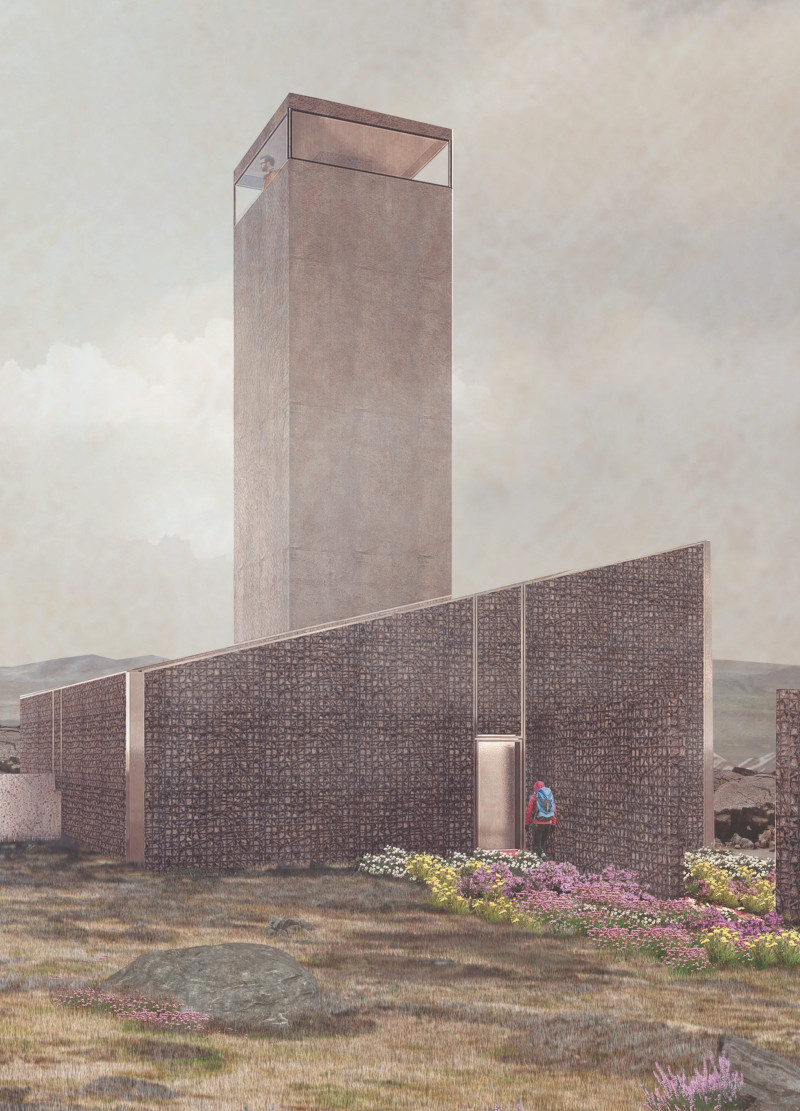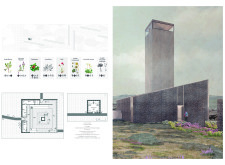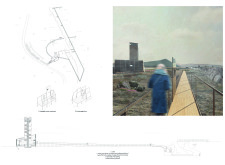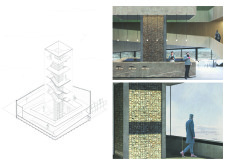5 key facts about this project
The design is situated in Iceland, a land shaped by the forces of fire and ice. It seeks to enhance how visitors connect with the area’s unique cultural and natural features. The focus is on creating an experience that respects the surrounding landscape and contributes to ecological health through thoughtful design elements.
Garden Design and Ecological Restoration
At the center of the design is a garden aimed at helping to restore the Icelandic landscape. It uses principles of nucleation to create groups of plants that attract local wildlife and encourage the growth of surrounding vegetation. By incorporating native plants, the garden strives to build a resilient ecosystem that can thrive on its own. This emphasis on ecological restoration underscores the importance of sustainability and the intention to revitalize the land.
Pathway and Visitor Engagement
The entrance pathway, referred to as a "great slow-down," plays an important role in the experience. It invites visitors to take their time, encouraging them to stop and observe the variety of life around them. This pathway establishes a connection between the built environment and nature, increasing awareness and appreciation of what lies within the landscape.
Architectural Elements and Experience
The tower serves as a significant feature, functioning as both a gateway and an observation point. Upon entering, visitors encounter a welcoming interior that contrasts with the colder environment outside. A gap window offers views into the fissures of the landscape, strengthening the connection between the design and nature. The ramp within the tower guides visitors toward different experiences in the caves, enriching their exploration of the site.
The combination of architectural features and landscaping creates a harmonious experience that encourages visitors to engage with the land. Each design element invites contemplation and fosters a deeper understanding of the natural environment. The focus on usability and ecological sensitivity leaves a lasting impression, emphasizing the rich qualities of the landscape itself.





















































